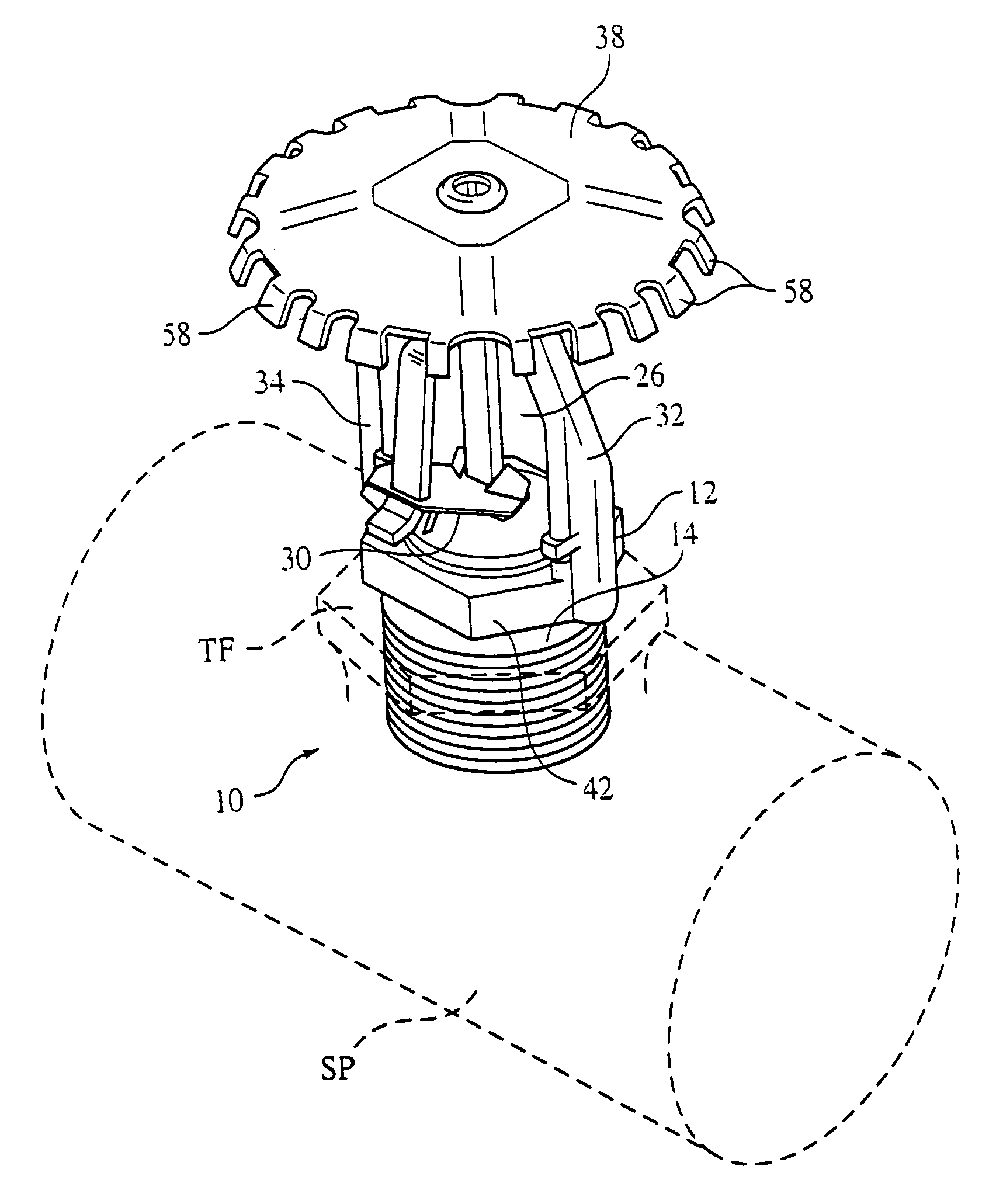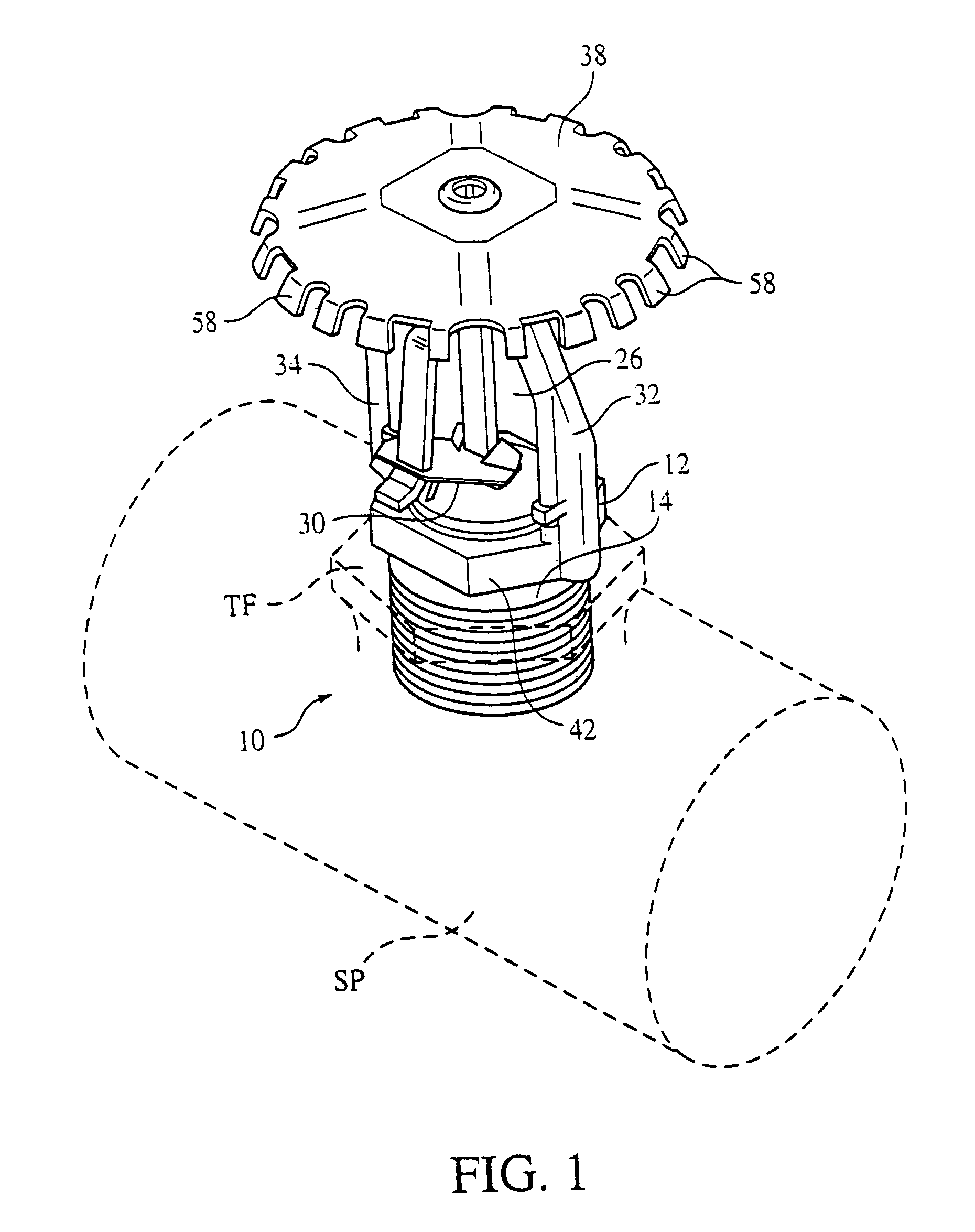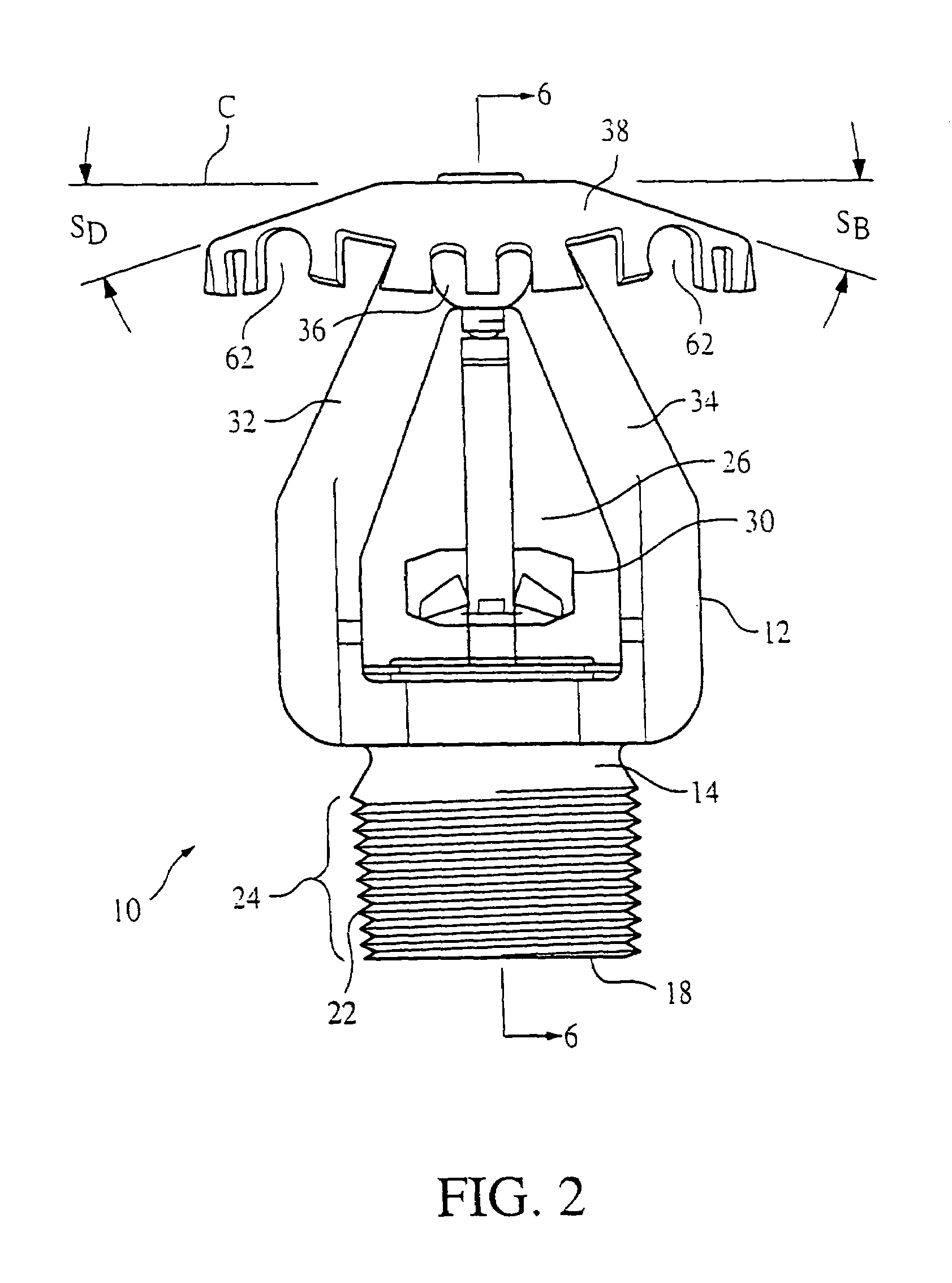Low pressure, extended coverage, upright fire protection sprinkler
a fire protection sprinkler and low pressure technology, applied in fire rescue, spray nozzles, spraying apparatus, etc., can solve the problem of high probability of rapid fire with high heat release ra
- Summary
- Abstract
- Description
- Claims
- Application Information
AI Technical Summary
Benefits of technology
Problems solved by technology
Method used
Image
Examples
example 1
[0061]For full-scale fire testing, four tiers of Class 2 commodity were stacked in a double row rack arrangement to a height of 19 feet, 8 inches beneath a ceiling 30 feet high. Grinnell Corporation Model EC-25 sprinklers, as described above, were installed in an array on centers of 14 feet by 14 feet, with constant operating pressure of 8.5 psig (e.g., nominal discharge per sprinkler of 73.5 gallons per minute) at inlet ends of the sprinklers. A fire was ignited adjacent to the floor and in a position centered below four of the Model EC-25 sprinklers. The fire was rapidly subdued by operation of only four sprinklers in the immediate vicinity of the fire area.
example 2
[0062]For full-scale fire testing, three tiers of Cartoned Group A unexpanded plastic commodity were stacked in a double-row rack arrangement to a height of 14 feet, 8 inches beneath a ceiling 25 feet high. Grinnell Corporation Model EC-25 sprinklers, as described above, were installed in an array on centers of 10 feet by 10 feet, with constant operating pressure of 7 psig (e.g., nominal discharge per sprinkler of 67 gallons per minute) at inlet ends of the sprinklers. A fire was ignited adjacent to the floor and in a position centered below one of the Model EC-25 sprinklers. The fire was rapidly subdued by operation of only the one sprinkler directly over the fire area.
example 3
[0063]For full-scale fire testing, three tiers of Cartoned Group A unexpanded plastic commodity were stacked in a palletized arrangement to a height of 15 feet, 3 inches beneath a ceiling 25 feet high. Grinnell Corporation Model EC-25 sprinklers, as described above, were installed in an array on centers of 14 feet by 14 feet, with constant operating pressure of 22 psig (e.g., nominal discharge per sprinkler of 118 gallons per minute) at inlet ends of the sprinklers. A fire was ignited adjacent to the floor and in a position centered below four of the Model EC-25 sprinklers. The fire was rapidly subdued by operation of only two sprinklers in the immediate vicinity of the fire area.
PUM
 Login to View More
Login to View More Abstract
Description
Claims
Application Information
 Login to View More
Login to View More - R&D
- Intellectual Property
- Life Sciences
- Materials
- Tech Scout
- Unparalleled Data Quality
- Higher Quality Content
- 60% Fewer Hallucinations
Browse by: Latest US Patents, China's latest patents, Technical Efficacy Thesaurus, Application Domain, Technology Topic, Popular Technical Reports.
© 2025 PatSnap. All rights reserved.Legal|Privacy policy|Modern Slavery Act Transparency Statement|Sitemap|About US| Contact US: help@patsnap.com



